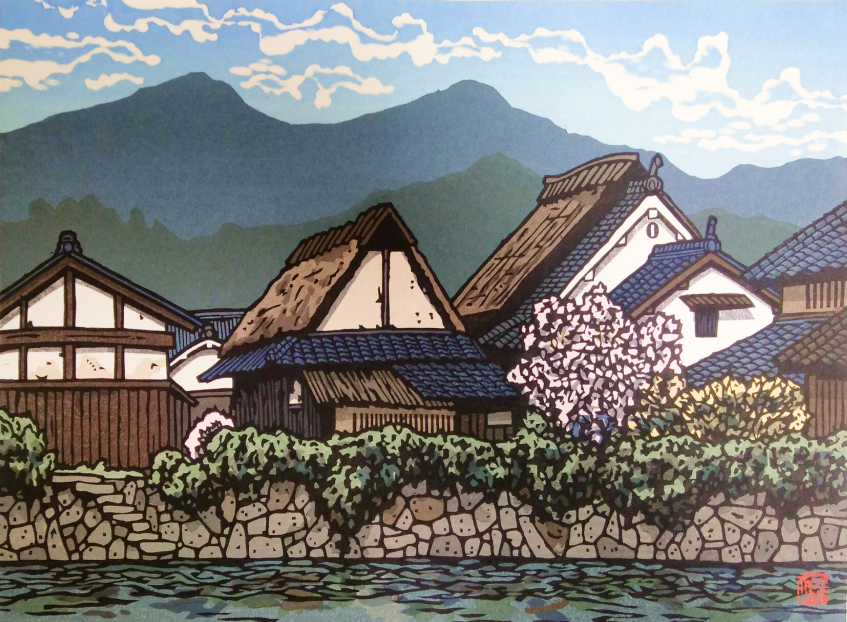Utagawa Yoshitaki
1841 ~ 1899Utagawa Yoshitaki, active from the late 1850s to the late 1880s, was a prolific artist who likely studied as a pupil of Utagawa Yoshiume in both Edo and
Ōsaka where he spent most of his time being particularly influenced by the works of Hirosada.
Starting his career in his early twenties, Yoshitaki published hundreds of works, primarily in chūban format and focusing on yakusha-e (actor prints), but also other genres
such as bijin-ga (images of beautiful women), musha-e (warrior prints), and fūkei-ga (landscapes), sometimes in deluxe ōban editions.
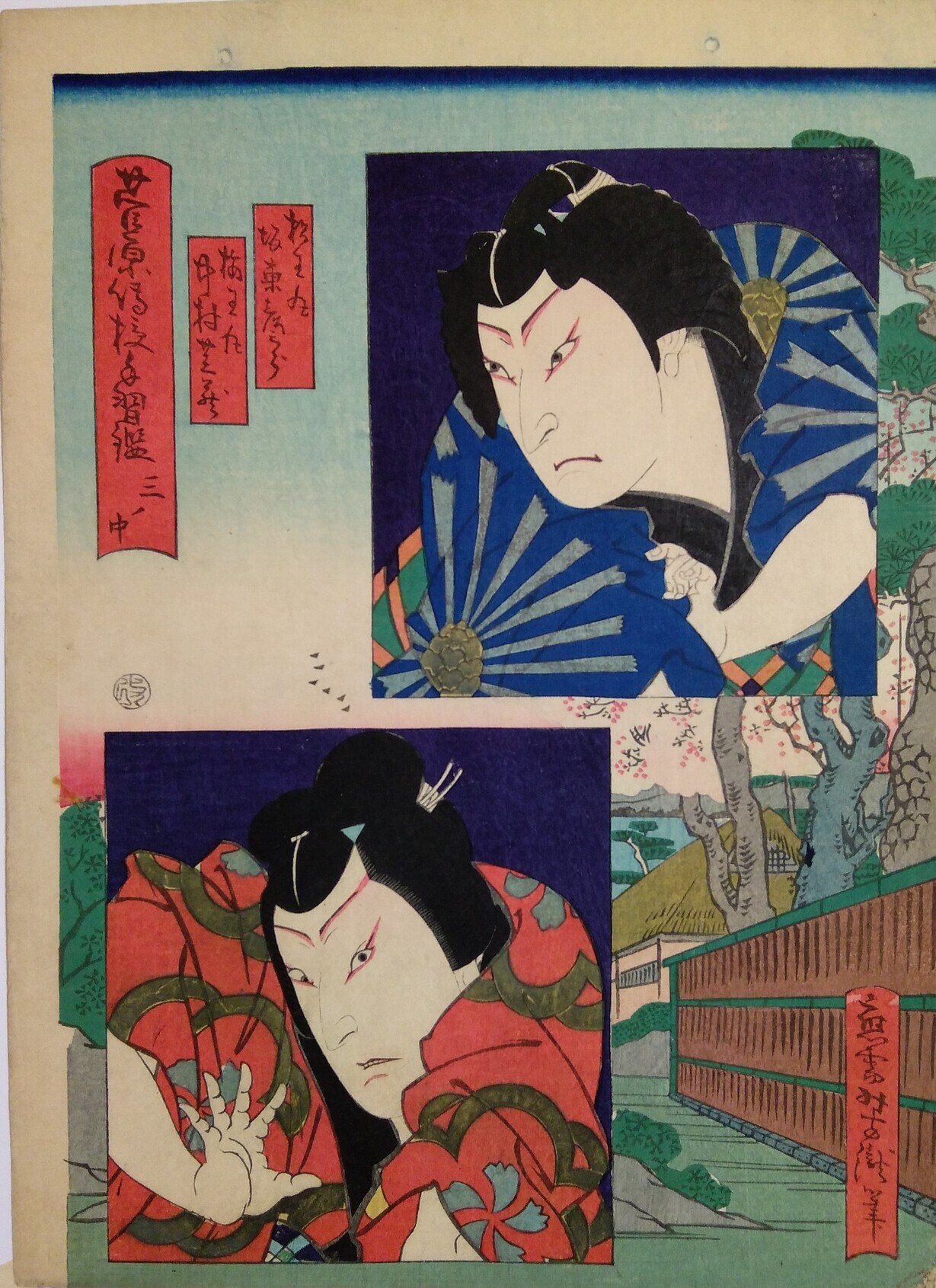
Meiji
Against night-blue mica backdrops, the brothers Matsuōmaru (upper) and Umeōmaru (lower) stand before the gate of Sugawara`s mansion, foreshadowing the celebrated “Kurumabiki” scene of Sugawara Denju Tenarai Kagami Act 3.
Against night-blue mica backdrops, the brothers Matsuōmaru (upper) and Umeōmaru (lower) stand before the gate of Sugawara`s mansion, foreshadowing the celebrated “Kurumabiki” scene of Sugawara Denju Tenarai Kagami Act 3.
The story is inspired by the life of Sugawara no Michizane (菅原道真), a Heian-period court noble who was falsely accused of conspiracy and later exiled to Kyūshū. In the play, the fictional triplets Matsuōmaru, Umeōmaru, and their brother
Sakuramaru play significant roles, symbolising loyalty and devotion to Michizane.
USD$ 177.00
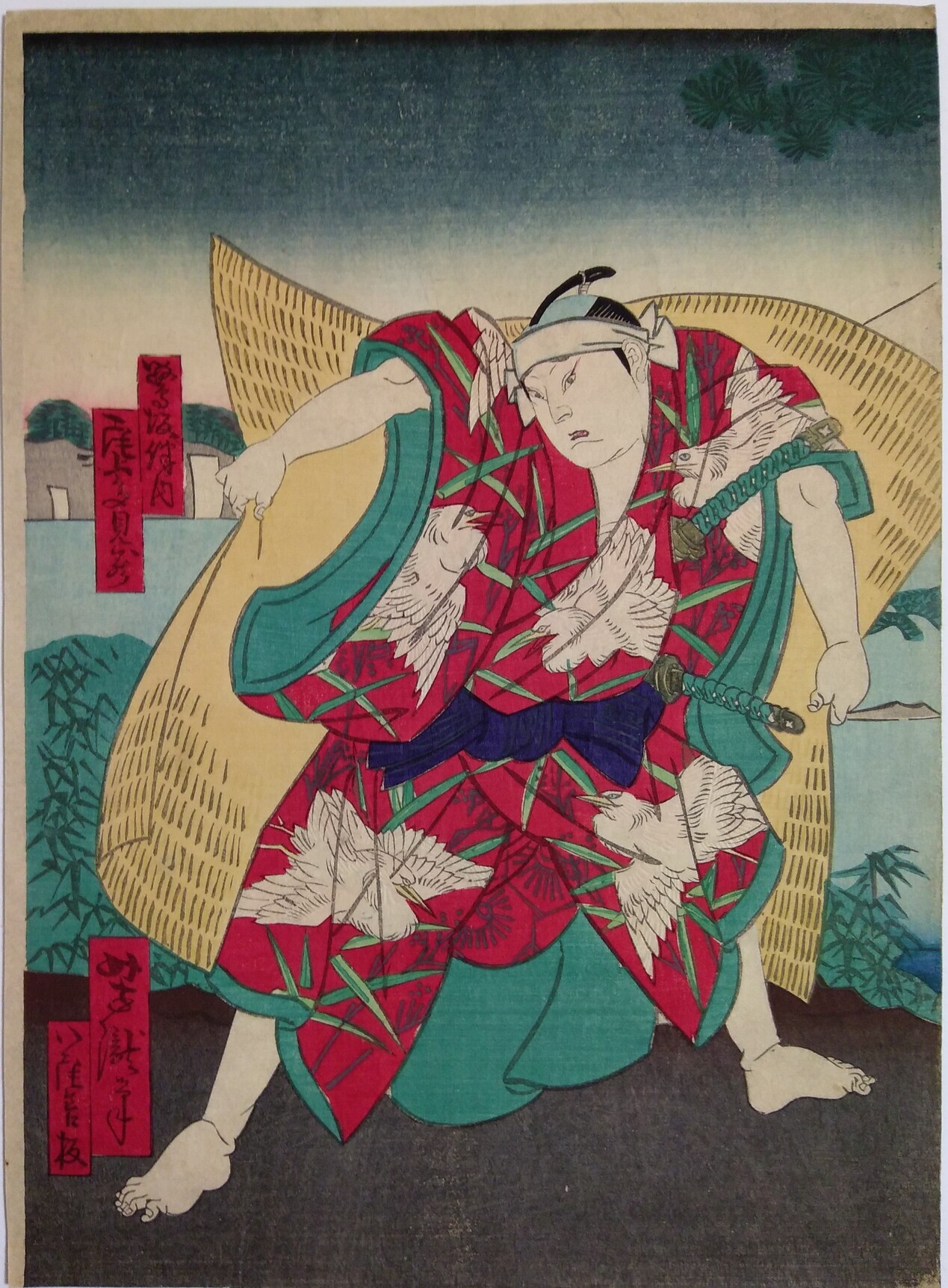
Meiji
Sagisaka Bannai, the foppish and buffoonish retainer of Moronō, is shown mid-motion, dressed in a flamboyant red robe adorned with
cranes and bamboo.
Sagisaka Bannai, the foppish and buffoonish retainer of Moronō, is shown mid-motion, dressed in a flamboyant red robe adorned with
cranes and bamboo.
This scene, from Chūshingura Act 3, captures the moment before En`ya Hangan is humiliated by Moronō, setting the stage for the vendetta.
Yoshitaki emphasises Bannai`s exaggerated posture and expression, highlighting the comic tone he brings to an otherwise solemn act.
USD$ 99.00
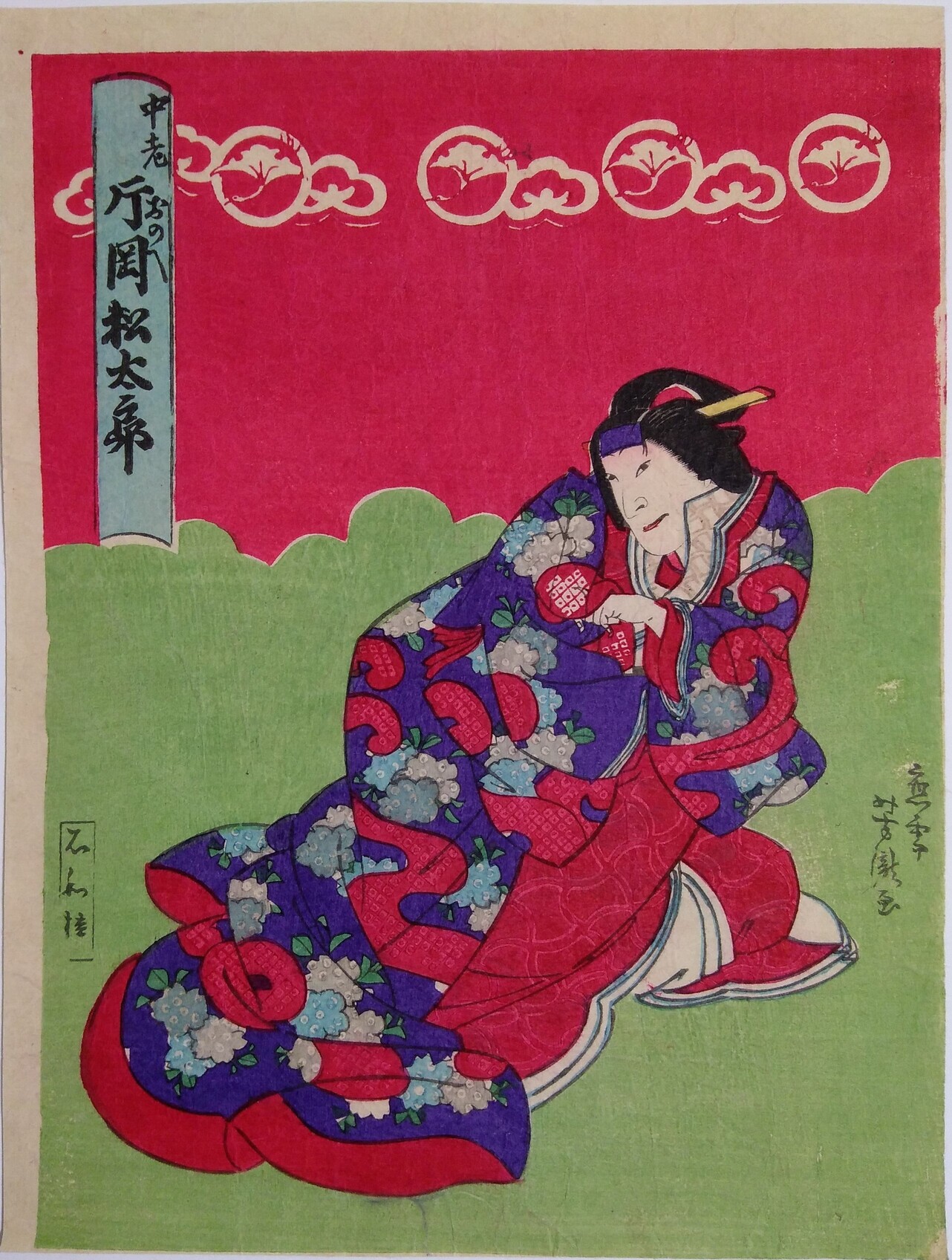
Meiji
The kabuki actor Kataoka Matsutarō portrays the onnagata (a male actor specialising in female roles) character Chūrō Onoe, likely from a kabuki
play titled Kagami-yama.
The kabuki actor Kataoka Matsutarō portrays the onnagata (a male actor specialising in female roles) character Chūrō Onoe, likely from a kabuki
play titled Kagami-yama.
This print may belong to a larger composition, such as a diptych or triptych, a common format in Yoshitaki`s body of work.
The actor`s and character`s names are displayed in the blue cartouche at the top left corner. The publisher`s seal appears in the bottom left corner, while the
artist`s signature, Yoshitaki, is positioned on the opposite side.
USD$ 79.00
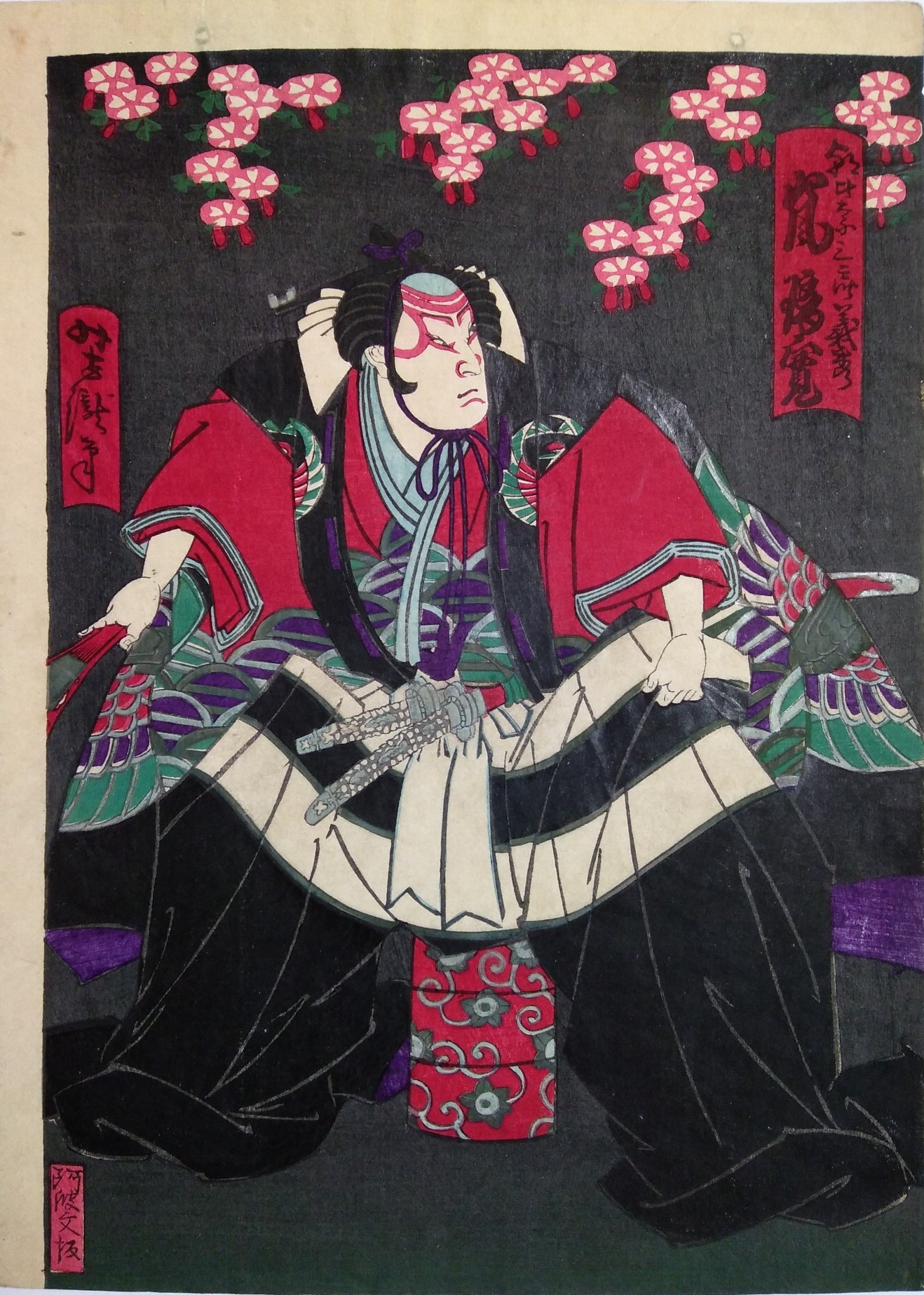 Sold Out
Sold Out
Meiji
The kabuki actor Arashi Rikan playing the role of a warrior.
The kabuki actor Arashi Rikan playing the role of a warrior.
Hyōmenzuri (表面摺り), the technique of rubbing the front side of the print with the baren has been used for enriching the aspect of this print. It gives a lacquered-like
effect that can be observed backlight.
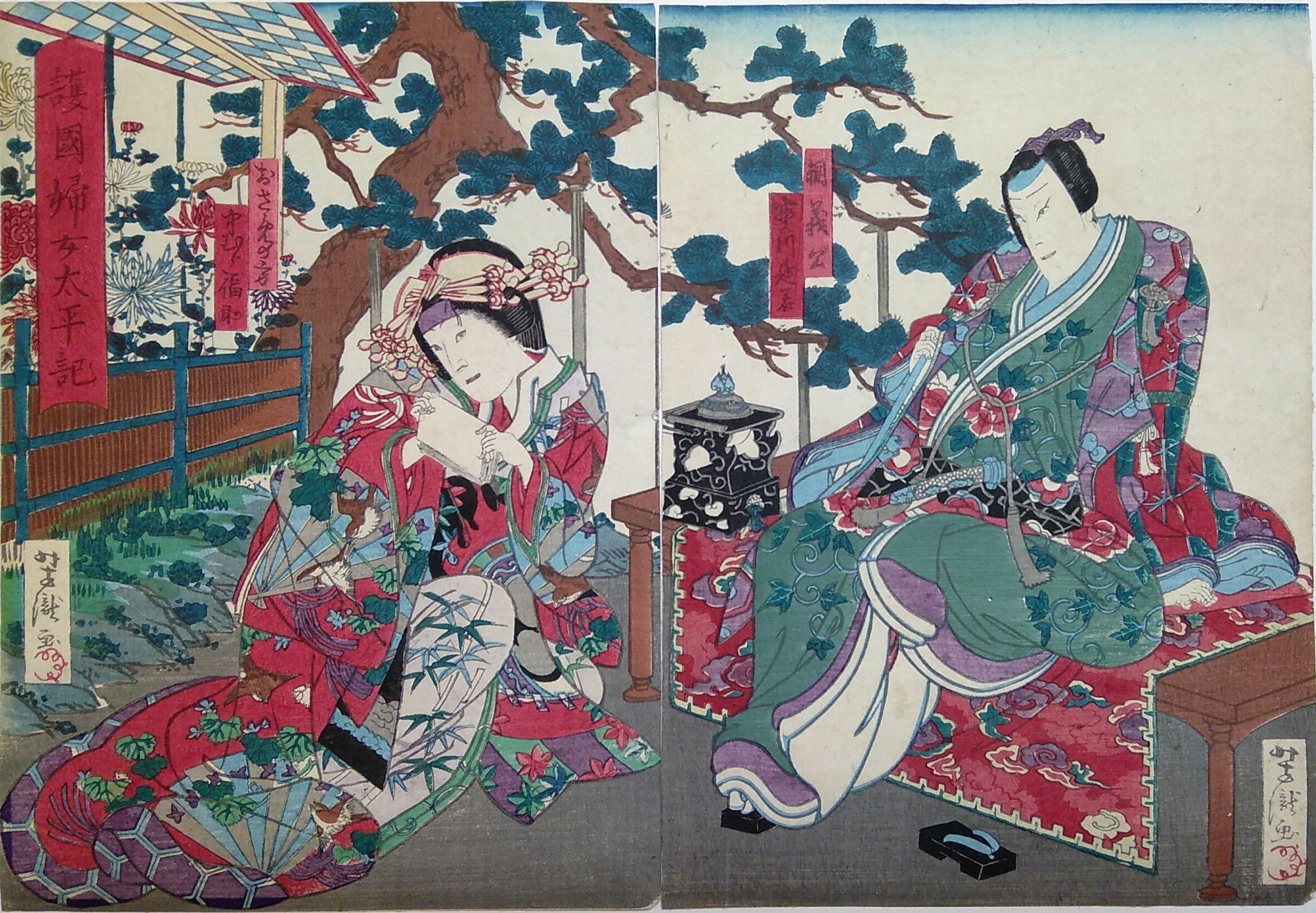
Meiji
This Japanese woodblock print diptych vividly captures a scene from kabuki a theater drama, featuring two actors in elaborate traditional costumes. On the right, the actor Jitsukawa Enjaku I portrays Tsunayoshi, seated in a dignified pose with a focused expression.
His costume is richly decorated in blue and green tones, adorned with intricate patterns that convey his noble character. On the left, Nakamura Fukusuke III plays Osame no Kata, shown in a more dynamic pose as she leans forward, holding a fan, dressed in a vibrant red kimono
patterned with floral and geometric motifs. The background and props, such as the traditional Japanese screens and pine tree, enhance the historical and cultural setting of the play, emphasizing the artistry and attention to detail characteristic of ukiyo-e prints from this era.
This Japanese woodblock print diptych vividly captures a scene from kabuki a theater drama, featuring two actors in elaborate traditional costumes. On the right, the actor Jitsukawa Enjaku I portrays Tsunayoshi, seated in a dignified pose with a focused expression.
His costume is richly decorated in blue and green tones, adorned with intricate patterns that convey his noble character. On the left, Nakamura Fukusuke III plays Osame no Kata, shown in a more dynamic pose as she leans forward, holding a fan, dressed in a vibrant red kimono
patterned with floral and geometric motifs. The background and props, such as the traditional Japanese screens and pine tree, enhance the historical and cultural setting of the play, emphasizing the artistry and attention to detail characteristic of ukiyo-e prints from this era.
The overall composition beautifully illustrates the theatricality and color of kabuki performances, capturing the essence of the characters and the dramatic tension of the scene.
USD$ 145.00
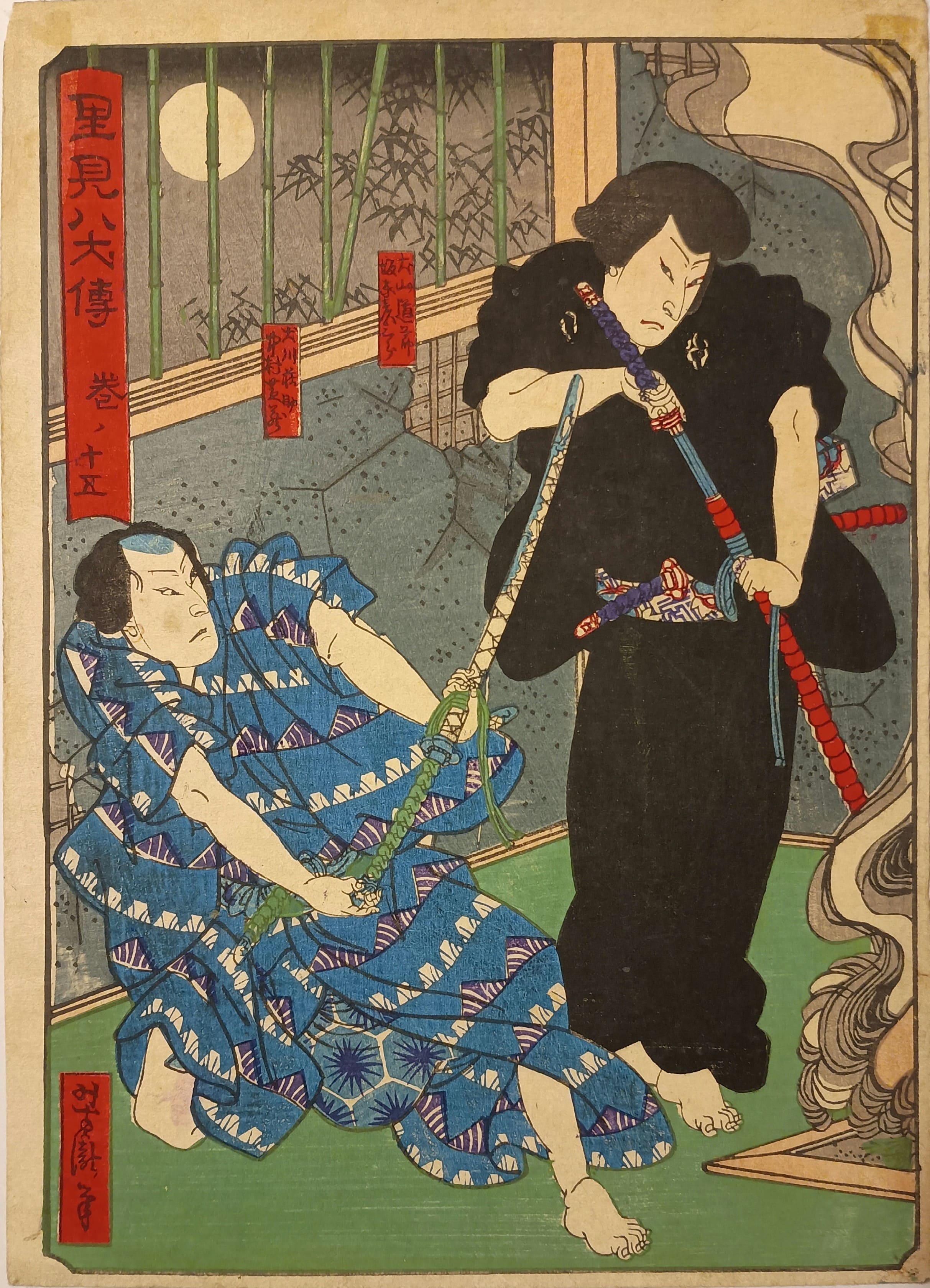
Meiji
Beneath a moon-lit bamboo lattice we witness a climactic scene inspired by Nansō Satomi Hakkenden, the sprawling Edo-period prose epic in which eight samurai brothers,
each bearing the character for “dog” (犬) in his surname, struggle to restore their clan`s honour.
